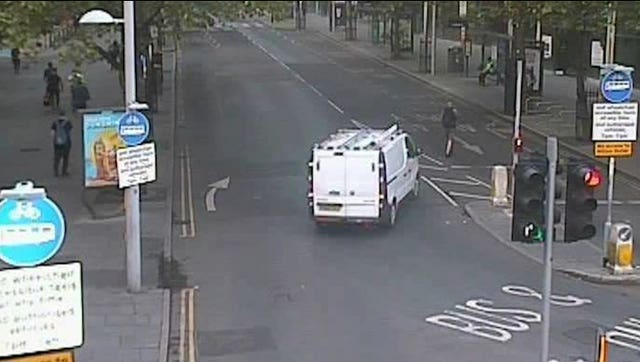Pc ‘not in pursuit’ behind van driven by Calocane ahead of collision – watchdog
Nottinghamshire Police referred itself to the Independent Office for Police Conduct for investigation after the incident in June last year.

A police officer who drove behind a van that had been stolen by triple killer Valdo Calocane before he ran over pedestrians in Nottingham city centre was not in pursuit and could not have foreseen the collision, an investigation by the police watchdog has concluded.
Calocane, who has paranoid schizophrenia, was sentenced at Nottingham Crown Court on Thursday to be detained at Ashworth High Security Hospital after earlier admitting three counts of manslaughter by diminished responsibility and three counts of attempted murder following a spate of attacks in Nottingham on June 13.
The 32-year-old “mercilessly” stabbed students Barnaby Webber, from Taunton in Somerset, and Grace O’Malley-Kumar, from Woodford in London, both 19, and school caretaker Ian Coates, 65, to death and went on to run over three pedestrians in the van he had stolen from Mr Coates.
The police vehicle, which had blue lights activated, was responding to an incident in Milton Street, where the first pedestrian had been struck by a van.
At the junction of Burton Street and South Sherwood Street, the officer caught sight of a white van matching the description being given out, the IOPC said.
The officer drove behind it at “speeds of under 30mph for 28 seconds” while making checks on the vehicle’s registration prior to the collision on the crossing.

In a statement released at the conclusion of criminal proceedings against Calocane on Thursday, IOPC regional director Derrick Campbell said: “Our sympathies are with everyone affected by the terrible events in Nottingham city centre that day.
“Our investigation considered the interaction between police and the suspect’s van before two people were injured.
“At the outset, the officer who spotted the van was not aware of a link between the incident in Milton Street and earlier stabbings.
“The evidence supports the conclusion that the officer placed himself behind the white van in order to relay information regarding the registration and its movements to the control room, so this could be passed to other officers in the vicinity.”
The IOPC said all officers involved were treated as witnesses during their three-month investigation and they did not identify any conduct or performance issues in relation to the incident.





